Michelangelo’s tomb is an iconic work of art in Florence’s Basilica of Santa Croce. It’s a must see attraction for art lovers and history buffs alike.
The tomb was designed by the renowned Italian painter, architect, and art historian Giorgio Vasari. Vasari was a close friend and ardent admirer of Michelangelo. He envisioned the tomb as an elaborate tribute to an artist who produced some of the world’s greatest and most iconic artworks.
Michelangelo passed away in Rome in 1564 at the age of 88. He had spent the last 30 years of his life there. Michelangelo was a bit of a political dissident and did not return to his hometown of Florence because he disliked the autocratic government of the Medici dukes.
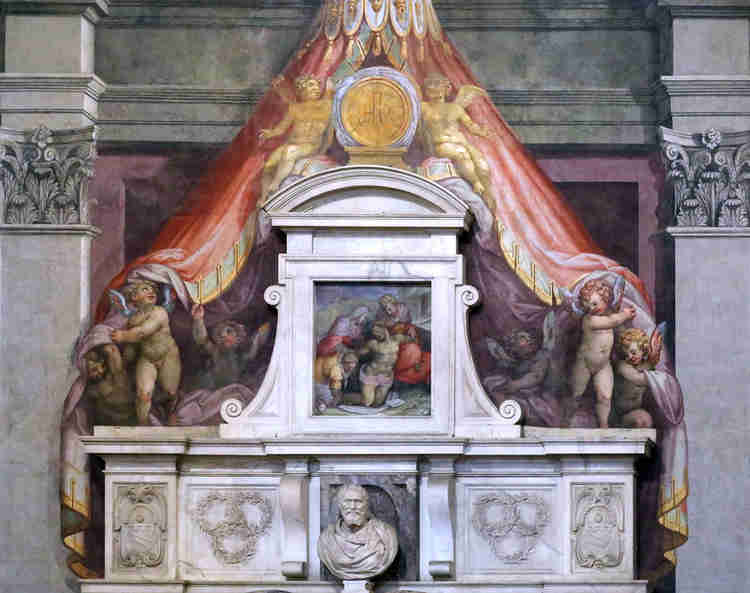
When Michelangelo died, he was initially buried in Church of SS Apostoli in Rome. At the time, the pope was planning a memorial and burial place for Michelangelo in St. Peter’s Basilica — a high honor indeed.
News of that artist’s death traveled quickly. Duke Cosimo I of Florence wanted to bring Michelangelo’s body home. So, his corpse was spirited out of Rome under the supervision of Lionardo, his nephew and heir.
To accomplish this, Lionardo hired merchants, who concealed Michelangelo’s body in a bale of hay. With this guise, his body arrived safely in Florence a month after his death. At this point, a solemn funeral was held in the Basilica of San Lorenzo.
This was a fitting place for the artist’s funeral given Michelangelo’s connection to the church. He had designed both the Laurentian Library and the New Sacristy of the church complex.
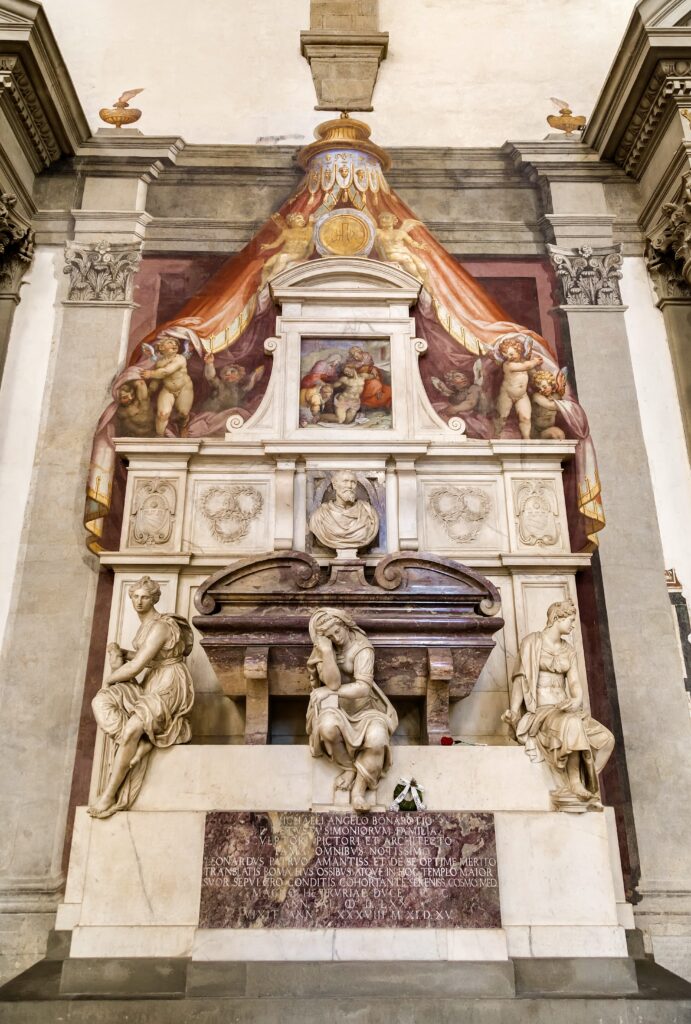
But Duke Cosimo decided Michelangelo should be buried in the Basilica of Santa Croce. This made sense as the church was near Michelangelo’s childhood home and the site of his family’s tomb.
Michelangelo’s tomb is situated in the basilica’s right nave near the entrance. The story goes that he wanted Florence Cathedral to be the first thing he saw upon rising to heaven.
Quite fittingly, Michelangelo’s tomb is surrounded by the tombs of other renowned Italian artists and thinkers such as Galileo Galilei, Niccolò Machiavelli, and Dante Alighieri.
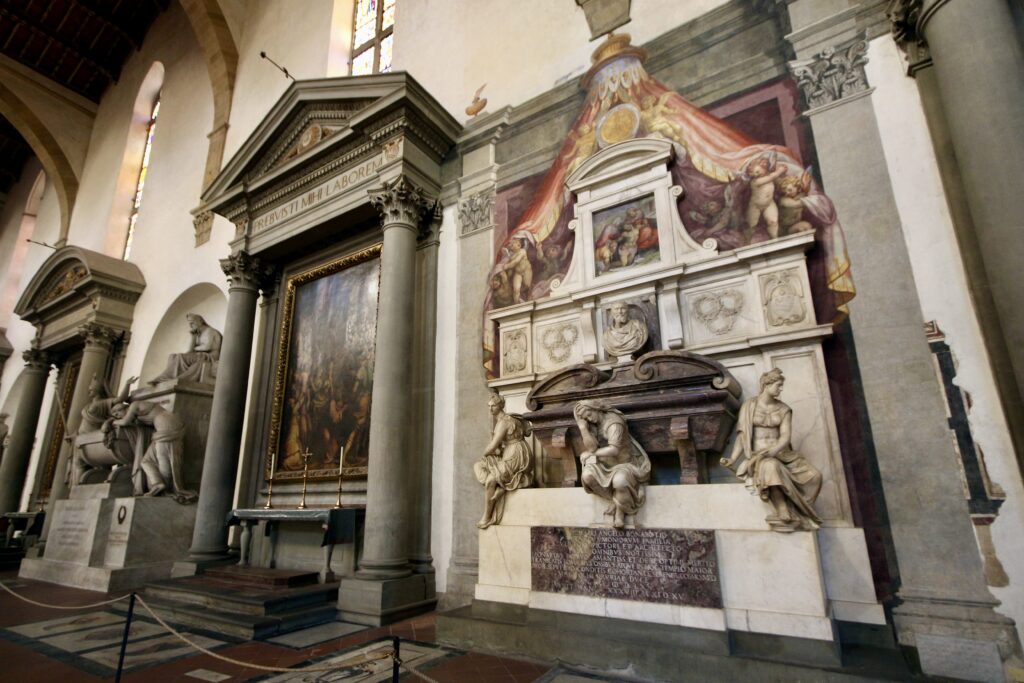
Cosimo I hired Vasari to design Michelangelo’s tomb. It was intended to celebrate Michelangelo’s complete mastery in every discipline of art. The tomb was unveiled to the public in 1561.
As you enter the basilica, the tomb is on the right hand side. It’s instantly recognizable by its frescoed canopy above a stone tomb. The canopy was a reminder that Michelangelo painted the Sistine Chapel in the Vatican Museums.
The tomb itself is a pyramidal structure made of white marble, with Michelangelo’s name inscribed in gold letters at the top. In the center is a bust of Michelangelo.
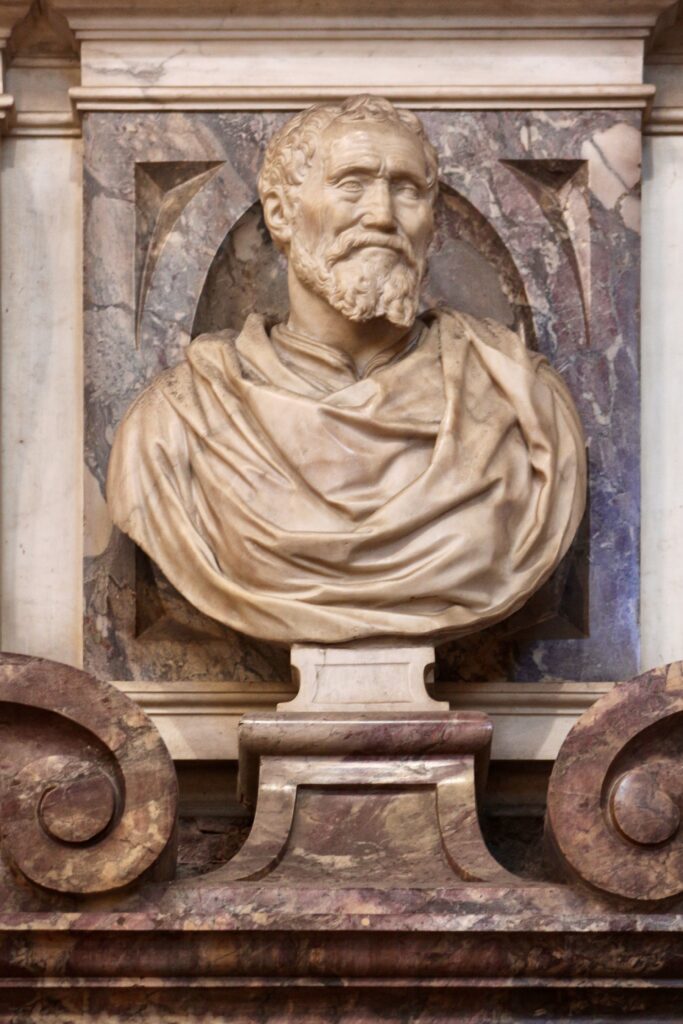
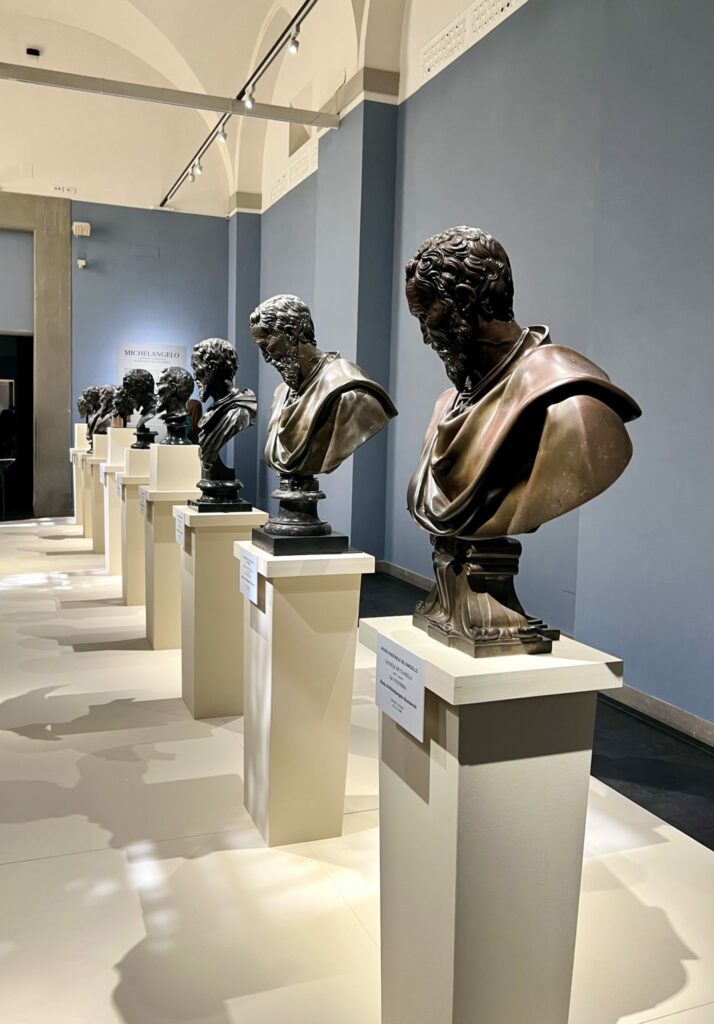
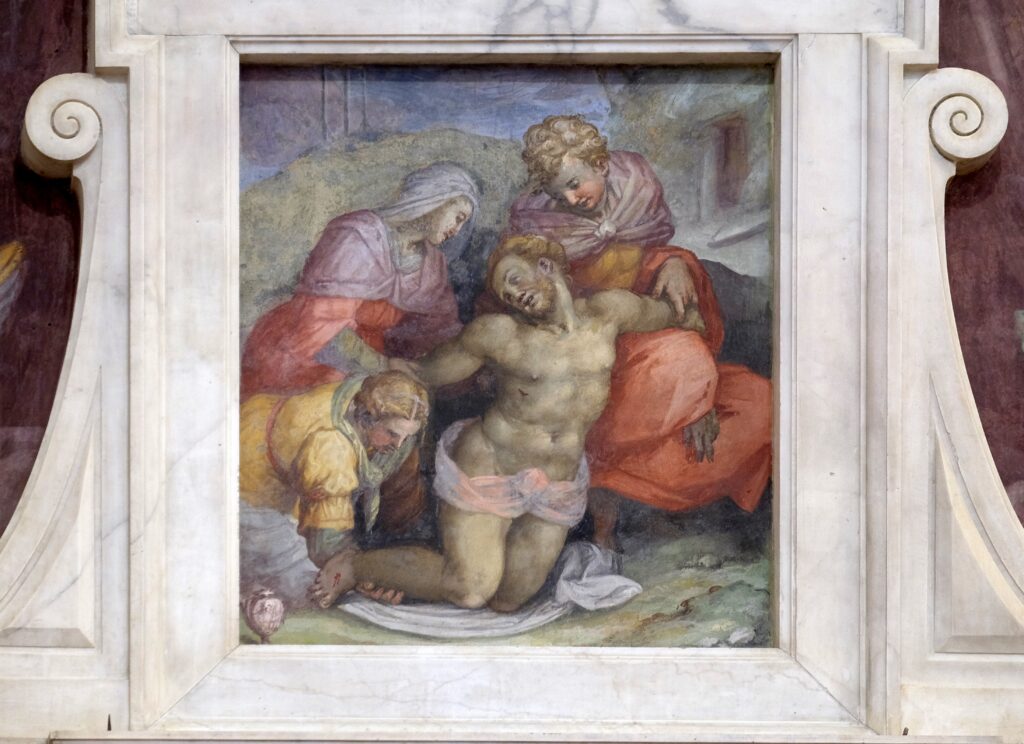
It’s an idealized copy of the bronze bust that Daniel di Volterra made directly from Michelangelo’s death mask. Today, you can see Volterra’s busts of the artist in the Galleria Accademia.
Above the tomb bust is a square frame showing an image of the lamentation over the dead body of Christ. In it, Christ has slipped to the ground and three figures mourn him.
Below the bust are three allegorical figures next to a purple tinged marble sarcophagus. They appear to mourn the loss of Michelangelo. The sculptures represent Michelangelo’s main artistic pursuits: painting, sculpture, and architecture.
On the left is a female figure representing painting. She holds a palette, paint brushes, and a male torso.
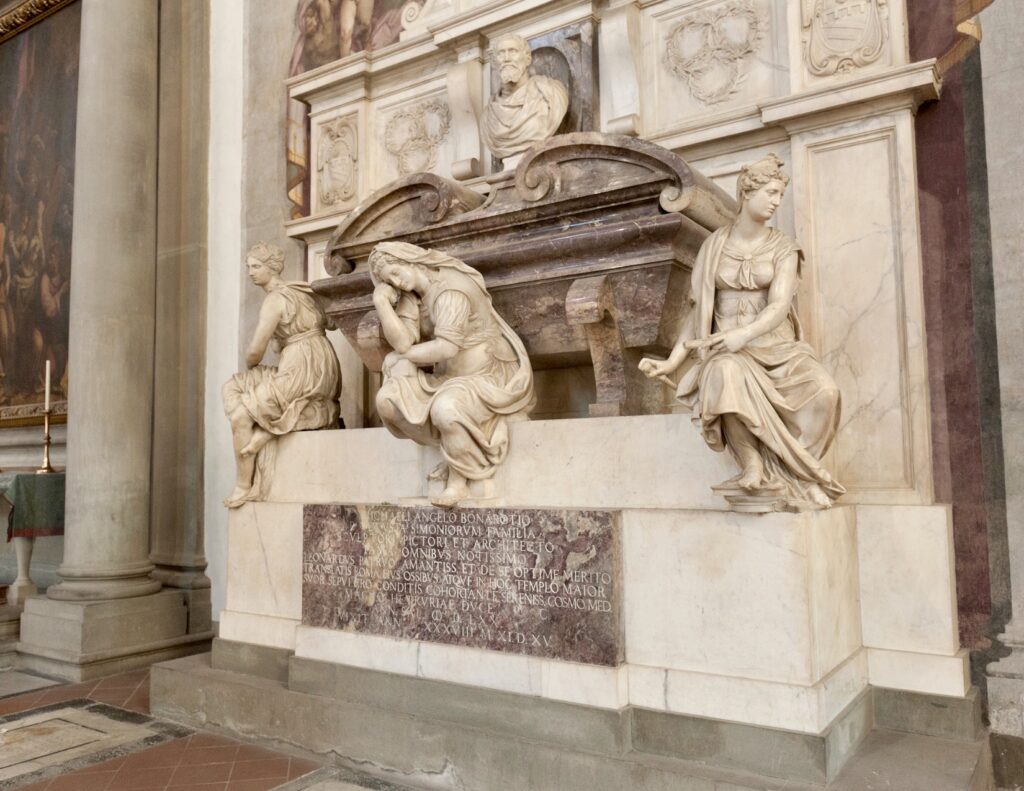
The central sculpture, in the place of honor, is the personification of sculpture. She sits in a rather melancholy pose. She holds a hammer, Michelangelo’s favorite chisel, and a block of marble.
The third figure, on the right, personifies the discipline of architecture. We know this because she holds a scroll and compass.
Above the allegories are two sets of interlocking laurel wreaths. They were inspired by a mark of three circles that Michelangelo would stamp on his blocks of marble in Carrara, indicating his ownership.
Vasari modified this logo by turning it into laurel wreaths. The laurel plant was often associated with the god Apollo in ancient mythology, which made it a fitting symbol for Michelangelo’s artistic legacy.
To the left and right of the interwoven wreaths are coat of arms of the Buonarotti family. Just to the left on the floor you will notice a floor tomb. That is the Buonarotti family tomb.
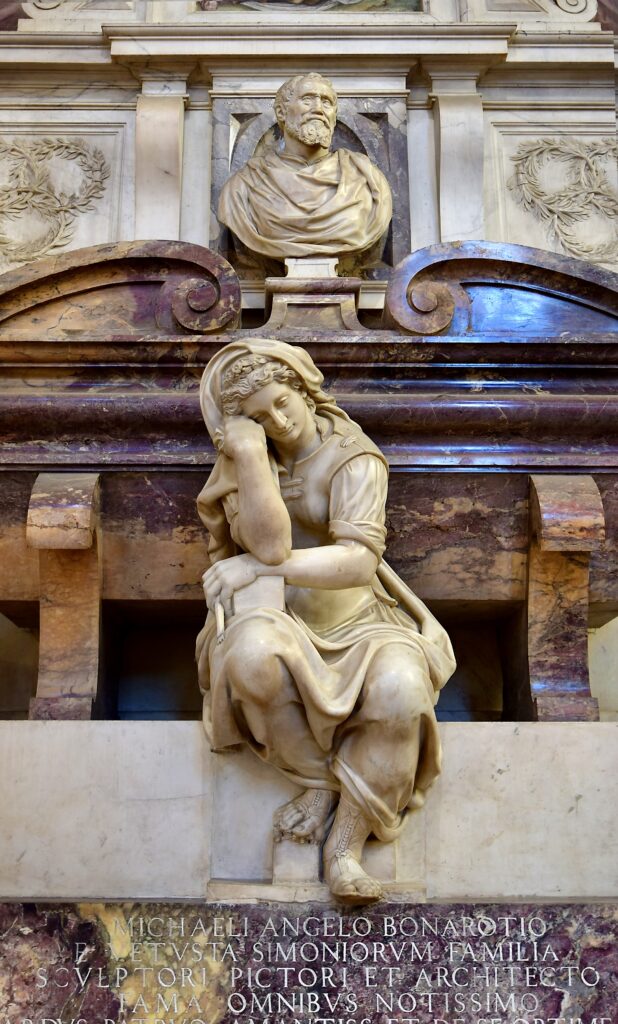
Is Michelangelo actually buried in his tomb monument? In theory, yes. But the tomb monument could just be a monument.
Was Vasari’s tomb design any good? It’s been criticized for being too carefully orchestrated and overly theatrical. In other words, not in keeping with Michelangelo’s restrained artistic style. So, perhaps it’s not the greatest legacy.
Still, the tomb is supposed to celebrate Michelangelo’s transcendence as an artist, one who conquered every discipline. In that sense, it’s a successful tomb and a fitting tribute to one of the greatest artists of the Italian Renaissance.
I hope you’ve enjoyed my guide to visiting Michelangelo’s tomb in Florence. You may enjoy these other Florence travel guides and resources:
- 2 Days in Florence Itinerary
- 3 Days In Florence Itinerary
- Top Attractions in Florence
- Hidden Gems in Florence
- Best Museums in Florence
- Florence Art Bucket List
- Best Day Trips From Florence
- Free Things To Do In Florence
- Guide to the Medici Palaces
- Who Were the Medici?
- Guide to the Oltrarno
If you’d like to see Michelangelo’s tomb, pin it for later.

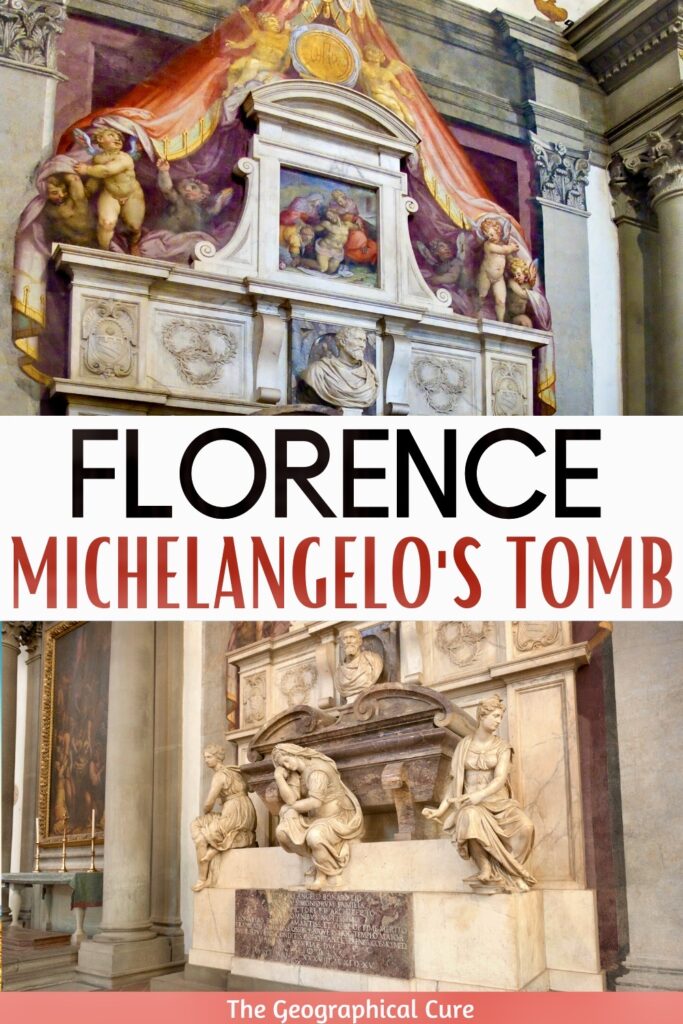
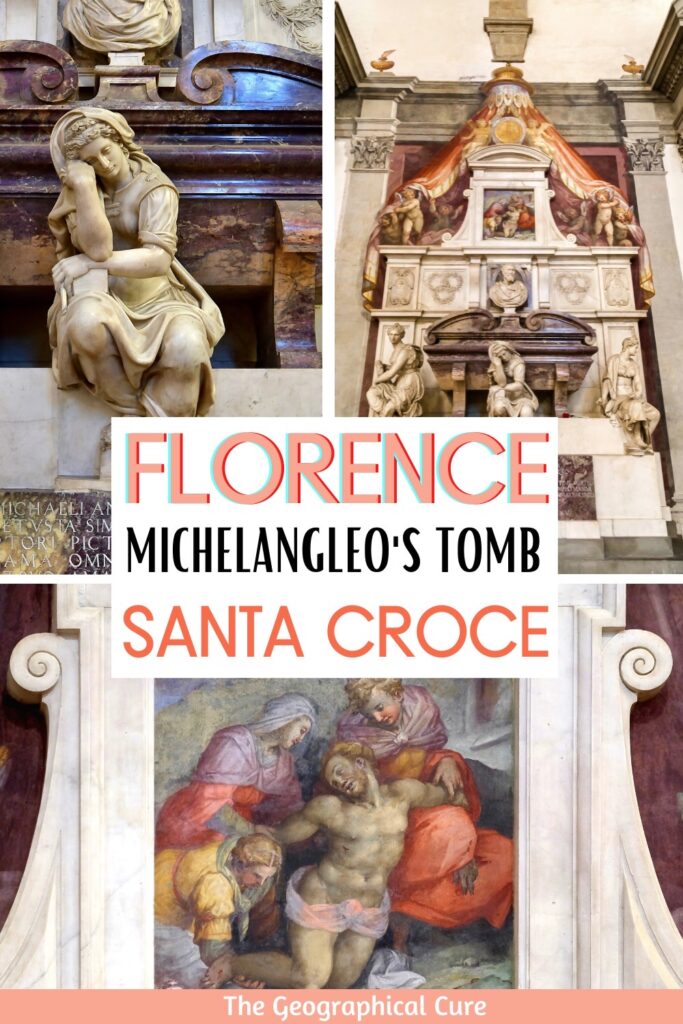
A memorial to Dante Alighieri may appear near Michelangelo’s tomb in Florence, but other sources suggest that Dante’s tomb is found in the Basilica of San Francesco, Ravenna, Italy.
Yes the actual tomb is in Ravenna. As I said, it’s a memorial in Santa Croce.